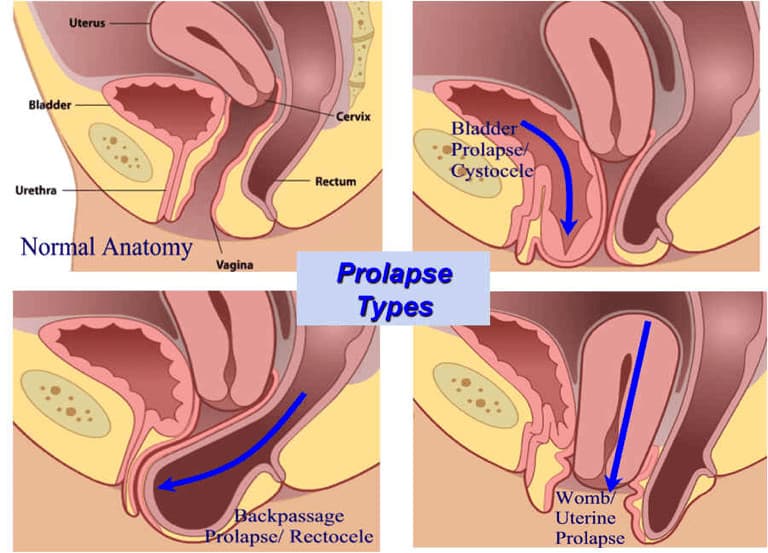Recognizing Symptoms of Prolapse After Childbirth
Welcome, new parents! If you’ve navigated to this page, chances are you’re on the lookout for information about postpartum recovery and specifically, symptoms of prolapse after giving birth. First off, congratulations on your new bundle of joy! And secondly, you’ve come to the right place – let’s gently dive into this delicate topic together and ensure your post-birth recovery is as smooth and informed as possible.
What is a Prolapse?
Before we explore symptoms, it’s essential to understand what prolapse is. A prolapse occurs when the muscles and ligaments supporting a woman’s pelvic organs weaken, allowing the organs to drop and press against or bulge into the vaginal canal. Childbirth is a common cause of this condition, but fear not, there are ways to manage and treat prolapse effectively.
Symptoms of Prolapse After Birth
Every woman’s body reacts differently after childbirth, so symptoms can vary widely in type and severity. However, being familiar with the general signs of pelvic organ prolapse can help you catch and address the condition early. Here are some symptoms that may indicate a prolapse:
- A feeling of fullness or pressure in your pelvis: It’s like a sensation that something is falling out of your vagina or that you’re sitting on a small ball.
- Discomfort or pain in your pelvis: This discomfort can be located in the lower back, pelvis, vagina, or rectum and may feel more pronounced after standing for long periods or at the end of the day.
- Visible or palpable bulge in the vagina: In some cases, you might notice or feel a bulge inside your vagina, especially when you strain or squat.
- Incontinence: Unexpected urine leakage or the need to urinate urgently or frequently could be a sign of urinary prolapse.
- Issues with bowel movements: Difficulty in bowel movements or a feeling of incomplete bowel emptying might indicate a form of prolapse affecting the rectum.
- Sensation of loose vaginal tissue: You might feel that the vaginal tissue is looser than usual, potentially affecting sexual function.
- Sexual discomfort: Pain during intercourse or reduced sensation can be indicative of a prolapse.
It’s important to remember that some mild symptoms are common and usually improve within the first six months after giving birth as your body heals. However, if you do notice any of these signs, it’s wise to consult your healthcare provider to assess and discuss potential treatment options.
Types of Prolapse
Pelvic organ prolapse comes in several forms, depending on the organ affected:
- Cystocele: A prolapse of the bladder into the vagina.
- Rectocele: A prolapse of the rectum into the back wall of the vagina.
- Uterine prolapse: A descent of the uterus towards or into the vaginal canal.
- Vaginal vault prolapse: Occurs after a hysterectomy when the top of the vagina descends into the vaginal canal.
- Enterocele: The small bowel pushes against the vaginal wall, usually occurring with other forms of prolapse.
Identifying which type of prolapse you’re experiencing can further clarify the symptoms and best treatment approach.
When to Seek Medical Attention
Many new moms experience a degree of prolapse after giving birth, and while it’s common, it’s equally important not to ignore the symptoms. If you experience any of the above symptoms persisting beyond a few weeks post-delivery or if they’re causing significant discomfort, it’s time to reach out to a healthcare professional.
Seek immediate medical attention if:
- You’re unable to pass urine or have a bowel movement.
- You experience severe and sudden pelvic pain.
- The prolapse makes it difficult to walk or perform day-to-day activities.
Remember, prolapse is a condition that often can be effectively managed or treated, especially when addressed early. So, there’s no need to panic – with the right support and treatment, you can work towards healing and enjoy this special time with your new little one.
In the next section of our comprehensive guide, we’ll discuss treatment options, exercises that can help, and lifestyle changes that may improve symptoms of prolapse. Stay tuned for more empowering information to take control of your postpartum health!

5 Things Parents Should Know in Preparing for Symptoms of Prolapse After Birth
While postpartum prolapse can be a little daunting, staying informed can significantly aid your recovery process. Here are five things every new parent should know when preparing for the possibility of prolapse after childbirth:
1. Pelvic Floor Exercises are Your Friend
You’ve probably heard of Kegel exercises – they’re not just there to prepare you for childbirth. These exercises are vital for strengthening the pelvic floor both before and after giving birth. Starting pelvic floor exercises as soon as it’s comfortable post-delivery can help reduce the risk of prolapse and alleviate some symptoms if it occurs. Remember — gentle is the keyword here!
2. Listen to Your Body
Understanding the difference between normal postpartum symptoms and those indicative of a prolapse is essential. While a bit of pressure and discomfort may be common, feeling a noticeable bulge or experiencing incontinence is not typical and warrants a check-up.
3. Postpartum Check-Ups Matter
It’s crucial not to skip your postpartum check-ups. These appointments are the perfect opportunity for your healthcare provider to catch any early signs of prolapse. Don’t be afraid to speak up about any unusual symptoms you’re experiencing – your doctors are there to help!
4. Diet and Hydration are Key
A balanced diet rich in fiber can prevent constipation, a common contributor to prolapse symptoms. Staying hydrated also keeps the bowels moving smoothly, reducing the strain and pressure on the pelvic floor.
5. Mind Your Lifting Technique (and How Much You Lift!)
After giving birth, it’s recommended to avoid lifting heavy objects for a while. However, life with a new baby can make this challenging. When you do need to lift something (like your little one), ensure proper technique by squatting and using your legs, not your back or abdomen — this helps protect your pelvic floor.
Finally, it’s all about balance and being kind to yourself during this time. Embrace a gradual approach to recovery, and don’t put too much pressure on your body or your mind. Celebrate the small victories and know that, with time and care, your body can heal and adjust to its new normal.
Let’s continue our journey through understanding postpartum prolapse with actionable advice and uplifting support.
Treatment and Management of Postpartum Prolapse
Should you face a prolapse following childbirth, know that options are available. Treatments range from lifestyle modifications to surgical interventions, with the goal of alleviating symptoms and improving your quality of life. We’ll discuss nonsurgical and surgical options, including pelvic floor therapy, pessaries, and surgery in the upcoming sections. Stay with us as we delve deeper into understanding and conquering prolapse post-pregnancy.
For those looking for a positive approach to postpartum care — we see you, we support you, and we’re here for you every step of the way. Knowledge is power; let’s use it to navigate postpartum recovery together with grace and strength.
See more great Things to Do with Kids in New Zealand here. For more information see here
Disclaimer
The articles available via our website provide general information only and we strongly urge readers to exercise caution and conduct their own thorough research and fact-checking. The information presented should not be taken as absolute truth, and, to the maximum extent permitted by law, we will not be held liable for any inaccuracies or errors in the content. It is essential for individuals to independently verify and validate the information before making any decisions or taking any actions based on the articles.




